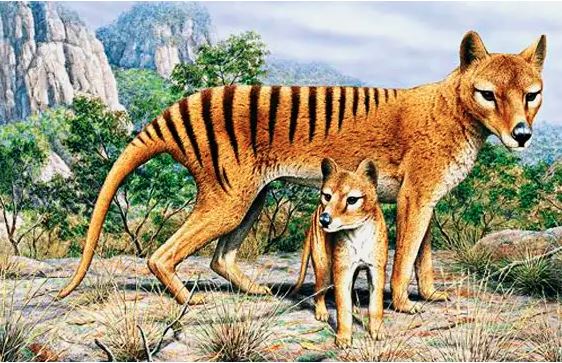Context
Scientists in the US and Australia have embarked on a $15-million project to resurrect the thylacine or Tasmanian Tiger, a marsupial that went extinct in the 1930s, using gene-editing technology.

About
- The ambitious project aims to reintroduce the animal to its native place Tasmania to revive the region’s lost ecological balance.
- Once widespread in the grass and woodlands of continental Australia extending north to New Guinea and south to Tasmania, the animal’s fate changed after the European Colonisation of Australia.
- The animals were reported to have eaten poultry of farmers, and were killed following official authorisation.
- Tasmanian Tiger (Thylacinus cynocephalus), the only animal in the Thylacinidae family to survive in modern times, was a marsupial mammal that raises young ones in a pouch.
- Even though the species earned its nickname Tasmanian Tiger because of the stripes along its back, it was a slow-paced carnivorous that usually hunted alone or in pairs at night.
- The sharply clawed animal had a dog-like head and ate kangaroos, other marsupials, small rodents, and birds.